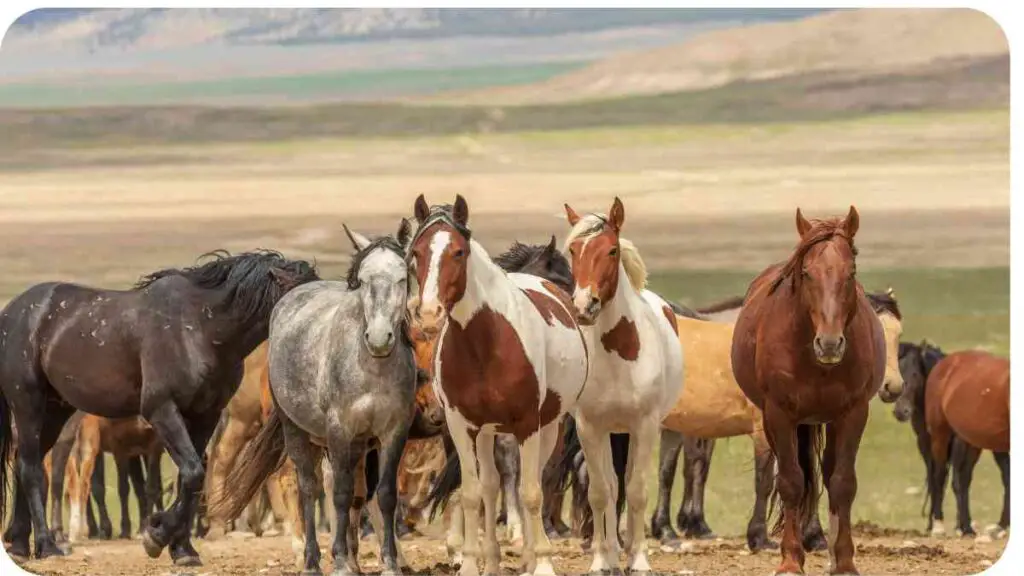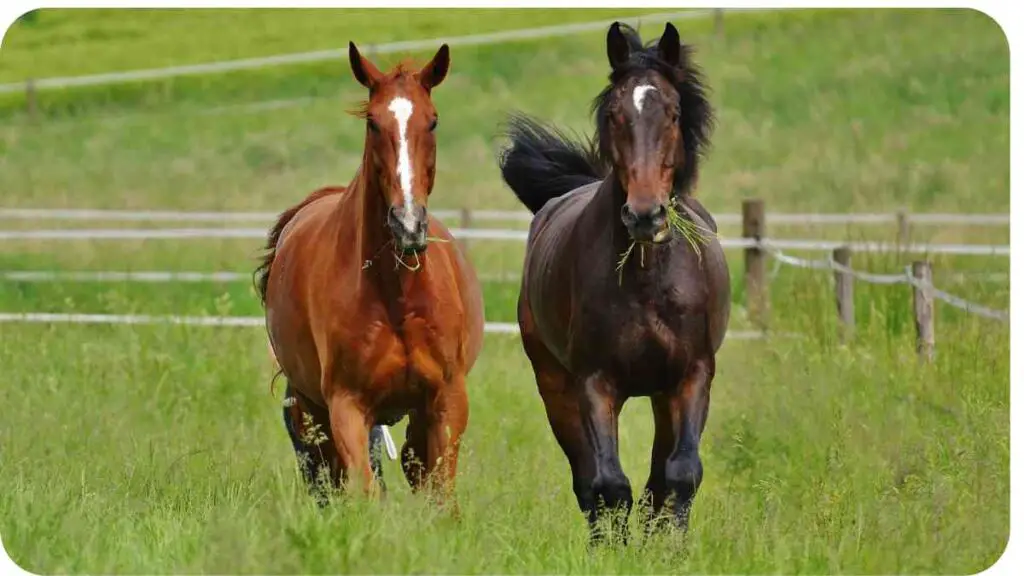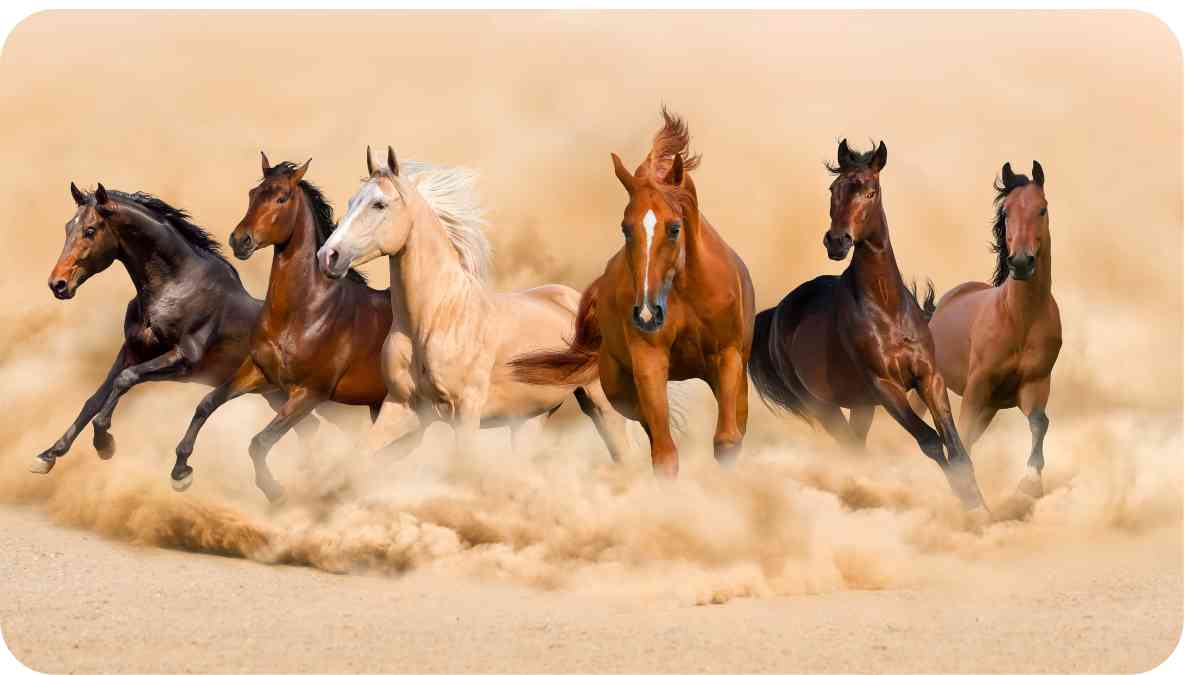As horse owners and riders, one common behavior that can leave us feeling perplexed and concerned is when our horses start bucking. Bucking is a natural instinct for horses, but it can also be dangerous and disruptive.
In this article, we will delve into the causes behind horse bucking and explore effective solutions to address this behavior. Whether you are a seasoned equestrian or a new horse enthusiast, understanding the reasons for bucking and the strategies to prevent it will help you create a harmonious and safe relationship with your equine partner.
| Takeaways |
|---|
| Understanding the causes of horse bucking is essential for |
| addressing and preventing this behavior effectively. |
| Physical discomfort or pain, poor training techniques, fear and |
| anxiety, past trauma, and excess energy can contribute to |
| bucking. |
| Addressing physical discomfort, using effective training and |
| handling methods, minimizing fear and anxiety, rehabilitating |
| traumatized horses, and providing adequate exercise are key |
| solutions to prevent horse bucking. |
| Patience, consistency, and a supportive approach are essential |
| for building a harmonious relationship with your horse. |
2. Understanding Horse Bucking
Before we dive into the causes, it’s essential to comprehend the instinctual nature of horses. Horses, by their very nature, are flight animals. They have evolved to use bucking as a defense mechanism against perceived threats or as a way to release excess energy. When a horse bucks, it involves a combination of kicking out with the hind legs while arching the back. This explosive behavior may occur during riding or even when the horse is turned out in a pasture.
When it comes to horse health, it’s crucial to understand equine colic. Colic can lead to discomfort and dangerous situations, but with the right knowledge, you can prevent it effectively.
3. The Instinctual Nature of Horses

Horses have an innate flight-or-fight response, which means they are quick to react to potentially dangerous situations. Understanding this instinctual nature is crucial to comprehending why a horse would resort to bucking. When a horse feels threatened, anxious, or overwhelmed, its instinctual response may be to buck and attempt to rid itself of the perceived danger.
4. Causes of Horse Bucking
There are several underlying factors that can contribute to horse bucking. It’s important to identify these causes to address the behavior effectively and provide appropriate solutions. Let’s explore some of the common causes:
4.1 Physical Discomfort or Pain
Horses, like any living beings, can experience physical discomfort or pain, which may lead to bucking. Physical issues such as ill-fitting tack, back problems, dental issues, or lameness can evoke discomfort in a horse, prompting them to exhibit bucking behavior. Addressing these underlying physical problems is crucial to preventing bucking and ensuring the overall well-being of your horse.
One of the concerns for horse owners is dealing with common horse illnesses. Learn about their meanings and ways to prevent these illnesses to keep your horse in top shape.
Table: Common Physical Issues and Solutions
| Physical Issue | Solution |
| Ill-fitting tack | Ensure properly fitted saddles, bridles, and other equipment |
| Back problems | Regular chiropractic or massage therapy |
| Dental issues | Schedule regular dental check-ups and care |
| Lameness | Consult with a veterinarian for proper diagnosis |
4.2 Poor Training or Handling Techniques
Improper training or handling techniques can contribute to behavioral issues, including bucking. When a horse is trained using forceful or harsh methods, it may become confused, fearful, or resistant.
This can manifest as bucking when the horse feels overwhelmed or unable to comprehend the rider’s cues. Employing effective and compassionate training methods is essential for building trust and preventing this behavior.
Table: Training Techniques for Bucking Behavior
| Technique | Description |
| Positive reinforcement | Rewarding desired behaviors with treats, praise, or gentle patting |
| Consistent and clear cues | Use precise and consistent aids to communicate with the horse |
| Gradual desensitization | Introduce the horse to potential triggers or stressful situations in incremental steps to build confidence over time |
4.3 Fear and Anxiety
Fear and anxiety are significant contributors to bucking behavior. Horses are highly perceptive animals, and if they sense danger or threat, they may react by bucking to protect themselves. Identifying the factors causing fear or anxiety in your horse and implementing techniques to minimize these emotions is essential for managing bucking behavior effectively.
Addressing behavioral issues is vital for a harmonious horse-rider relationship. Explore tips and tricks for solving horse behavior problems to ensure a safe and enjoyable riding experience.
Table: Calming Techniques for Nervous Horses
| Technique | Description |
| Groundwork exercises | Engaging in groundwork exercises to establish trust, develop a bond, and build confidence in the horse |
| Desensitization | Gradually exposing the horse to potential triggers or situations that cause anxiety, allowing them to adapt slowly |
| Creating a calm environment | Providing a quiet, stress-free atmosphere for the horse’s daily routine, including stable and pasture management |
4.4 Past Traumatic Experiences
Horses that have experienced past traumatic events, such as abuse or accidents, may exhibit bucking behavior as a result of those negative associations. Traumatized horses may be triggered by certain situations that remind them of the past trauma. Patiently and sensitively working with these horses through specialized rehabilitation strategies can help them overcome their fears and reduce bucking tendencies.
Table: Rehabilitation Strategies for Traumatized Horses
| Strategy | Description |
| Establishing trust | Building a foundation of trust through gentle handling, consistent routines, and positive reinforcement |
| Slow and gradual exposure | Introducing previously triggering stimuli in small doses, gradually increasing exposure over time |
| Professional guidance | Seeking assistance from experienced trainers or equine behaviorists who specialize in traumatized horses |
4.5 Excess Energy or Lack of Exercise

Like humans, horses require regular exercise to maintain physical and mental well-being. A horse with excess energy or pent-up frustration due to a lack of exercise may express this through bucking behavior. Ensuring your horse has an appropriate outlet for their energy through regular exercise and engaging activities can significantly reduce bucking tendencies.
Riding techniques play a crucial role in horseback safety. Discover the importance of proper riding techniques to minimize risks and enhance your riding skills.
Table: Engaging Exercises for Energetic Horses
| Exercise | Description |
| Regular turnout | Allowing the horse ample time in a spacious pasture to graze, move around, and socialize with other horses |
| Lunging or longeing | Controlled exercise in which the horse is guided on a line, encouraging them to move in circles at various gaits |
| Trail rides or hacking | Providing variety and mental stimulation through leisurely rides on trails or in open spaces outside of the arena |
5. Solutions to Prevent Horse Bucking
Now that we have explored the various causes of horse bucking, let’s dive into some effective solutions to address and prevent this behavior. By implementing these strategies, you can establish a harmonious and safe partnership with your horse.
5.1 Addressing Physical Discomfort or Pain
Regular veterinary care, including dental check-ups, chiropractic or massage therapy, and ensuring properly fitting tack, is essential to alleviate any physical discomfort or pain that may contribute to bucking behavior. Consulting with equine professionals can provide valuable guidance in this area.
5.2 Implementing Effective Training and Handling Methods
Employing positive reinforcement techniques, consistent and clear cues, and gradual desensitization can significantly improve your horse’s response and understanding. Seeking guidance or training assistance from knowledgeable professionals can help refine your skills and ensure a successful training journey.
Before hitting the trails, it’s essential to be aware of horse riding etiquette. Knowing the do’s and don’ts ensures a respectful and enjoyable experience for you and others on the trail.
5.3 Minimizing Fear and Anxiety
Creating a calm and stress-free environment, providing regular groundwork exercises, and gradually desensitizing your horse to potential triggers can help minimize fear and anxiety. Patience and understanding are key when working with nervous horses, allowing them to build confidence at their own pace.
5.4 Overcoming Past Trauma
Establishing trust, minimizing triggers, and working with specialized trainers or behaviorists can help traumatized horses overcome their past experiences. Emphasizing positive associations and focusing on rebuilding their confidence is vital for reducing bucking behavior.
5.5 Exercising and Channeling Energy Appropriately
Regular turnout, lunging or longeing, and engaging in trail rides or hacking can provide your horse with adequate exercise and mental stimulation. Remember, a tired horse is less likely to exhibit excessive bucking behavior.
Conclusion
Understanding the causes of horse bucking and implementing appropriate solutions is vital for creating a safe and harmonious partnership with your equine companion.
By addressing physical discomfort, using effective training techniques, minimizing fear and anxiety, aiding in the rehabilitation of traumatized horses, and ensuring proper exercise, you can significantly reduce and prevent bucking behaviors.
Remember, patience, consistency, and a supportive approach will contribute to a positive and fulfilling relationship with your horse.
Further Reading
Here are some additional resources to further enhance your knowledge on horse riding and trail etiquette:
- Horse Journals – Trail Riding Etiquette: This article provides valuable insights into proper trail riding etiquette, including tips on safety, communication, and respecting other trail users.
- University of Kentucky College of Agriculture, Food, and Environment – Trail Riding Etiquette for Horse Enthusiasts: Learn about the etiquette guidelines for horse enthusiasts when venturing out on the trails. This resource covers important considerations such as yielding to other riders and hikers, trail maintenance, and minimizing your impact on the environment.
- Equine Helper – Horse Trail Riding Tips: Discover useful tips and advice for an enjoyable and safe trail riding experience. This resource covers topics such as proper trail preparation, rider safety, and horse handling on the trail.
FAQs
How can I determine if my horse is in pain or discomfort?
Signs of pain or discomfort in horses may include changes in behavior, such as resistance to being tacked up, reluctance to move, or altered gait. It’s essential to pay attention to any noticeable changes in your horse’s behavior or movement patterns and consult with a veterinarian to rule out any underlying physical issues.
How can I build trust with a traumatized horse?
Building trust takes time and patience. Start by establishing a consistent and predictable routine for the horse, showing kindness and understanding. Use positive reinforcement techniques and avoid forceful methods. Work with an experienced trainer who specializes in rehabilitating traumatized horses for guidance and support.
How should I approach desensitizing my nervous horse?
Desensitization should be done gradually and systematically. Start by introducing your horse to the triggering stimuli at a distance and gradually decrease the distance over time as the horse becomes more comfortable. Reward and praise the horse for calm behavior and always prioritize their safety and well-being during the process.
What are some exercises I can do to help my energetic horse expend excess energy?
Regular turnout in a spacious pasture can provide the horse with ample time to move and socialize, helping them expend excess energy. Lunging or longeing can also be beneficial, as it allows the horse to burn off energy while working in a controlled setting. Incorporating trail rides or hacking into their routine can provide mental stimulation and variety.
How can I ensure my horse’s tack fits properly?
Properly fitting tack is crucial for the comfort and well-being of your horse. Consult with an experienced saddle fitter to ensure the saddle fits correctly. Take regular measurements of your horse’s back and ensure the bridle, bit, and other equipment are appropriate for their size and conformation. Regularly check for signs of discomfort or rubbing and make necessary adjustments.

Hi there! My name is Hellen James, and I’m a horse riding expert. I’ve been riding horses since I was just a kid—and it’s been my passion ever since. But getting started with horse riding can be overwhelming. There’s so much to learn! If you’re looking for a way to get started and make sure you’re doing it right, I’m here to help.


